Make these naturally dyed eggs with herbal tea to add beautiful color to Easter eggs! There are many different shades of herbal tea from light like chamomile to dark like elderberry. The colors from herbs can be very effective in dyeing eggs naturally. Skip the store bought egg dye and use plants instead!
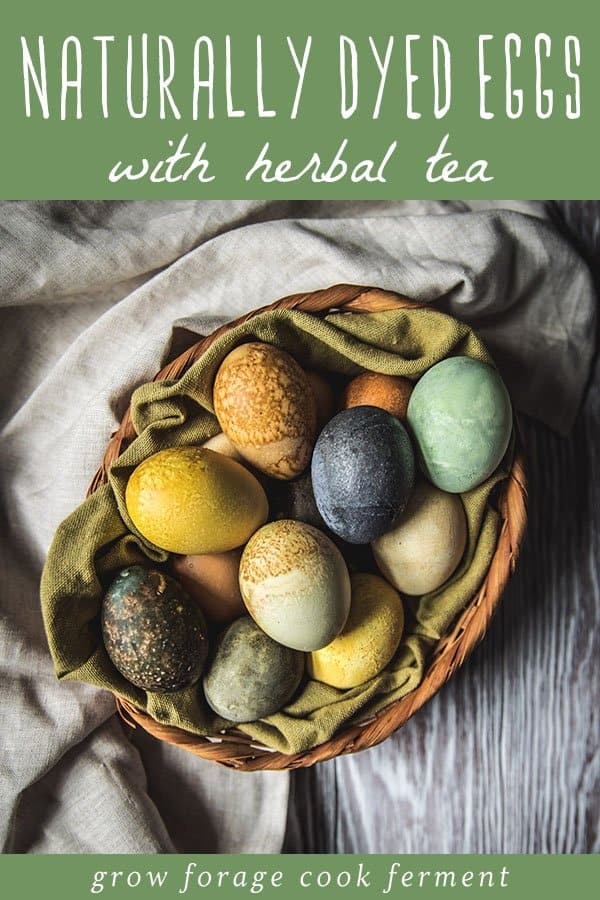
Want to save this post for later?
Dyeing Eggs With Herbal Tea
Dyeing Easter eggs with herbal tea is so fun and easy! It’s a project that both kids and adults will love. The eggs are gorgeous and no two are the same.
Many of the herbs used for dyeing you might already have in your household!
Herbs to Use for Dyeing Eggs
There are many different herbs that can be used to dye eggs depending on the colors that you want. One thing to keep in mind is that the color of the herb does not necessarily mean that is the color the egg will be!
I used dried herbs except for the turmeric which I used fresh turmeric root, but dried could also be used for that (and may even add more color).
Mountain Rose Herbs has a great selection of dried herbs!
Here are the herbs that I used:
- Turmeric
- Elderberry
- Hawthorn berry
- Calendula
- Rose hips
- Lavender
- Chamomile
- Hibiscus
Some other herbs and flowers you could try are wild violets, dandelion flowers, dandelion root, forsythia flowers, lilac flowers, chive blossoms, or any other edible plants or flowers that you may have growing!
Green tea, rooibos, nettle, or chaga are other options you could try as well.
Other popular non-herb choices for natural egg dyeing are beets, red or yellow onion skins, red cabbage, blueberries, blackberries, or spinach.
Here is a good tutorial that describes how to make egg dye with vegetables.
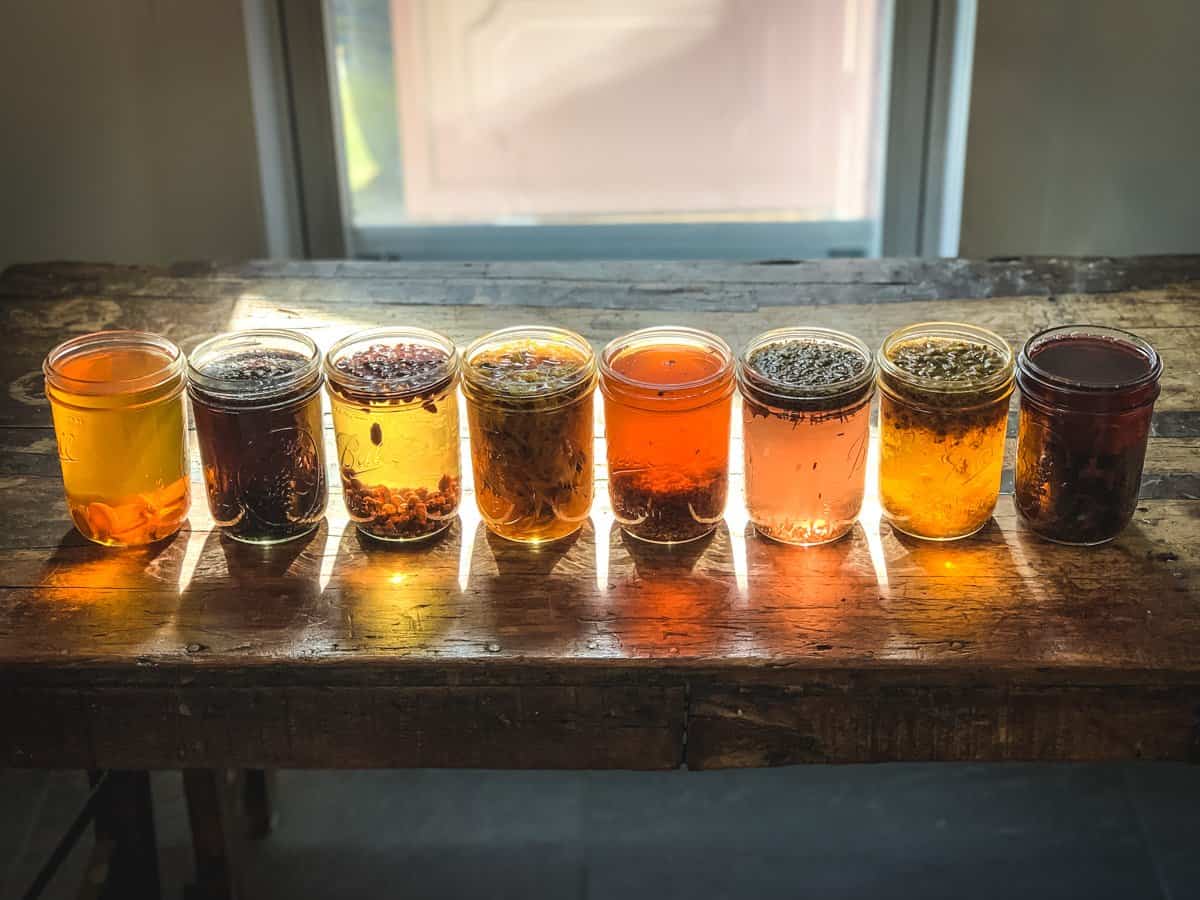
Left to right: turmeric, elderberry, hawthorn berry, calendula, rose hips, lavender, chamomile, and hibiscus
Mordants and Modifiers
When making the herbal tea egg dye, it is recommended to also add a mordant or modifier. A mordant helps to set the color on the eggs and a modifier changes the color of the dye.
The most common mordant used for egg dyeing is alum and the most common modifier is white vinegar.
Alum and vinegar will do different things to the coloration of the eggs for each herbal tea that is used. I wanted to see the difference between them, so after I made the teas I split each one in half and added vinegar to one part and alum to the other before adding the eggs.
It was pretty cool to see the difference! In the photo below the eggs on left were dyed with the addition of alum and on the right with the addition of white vinegar.
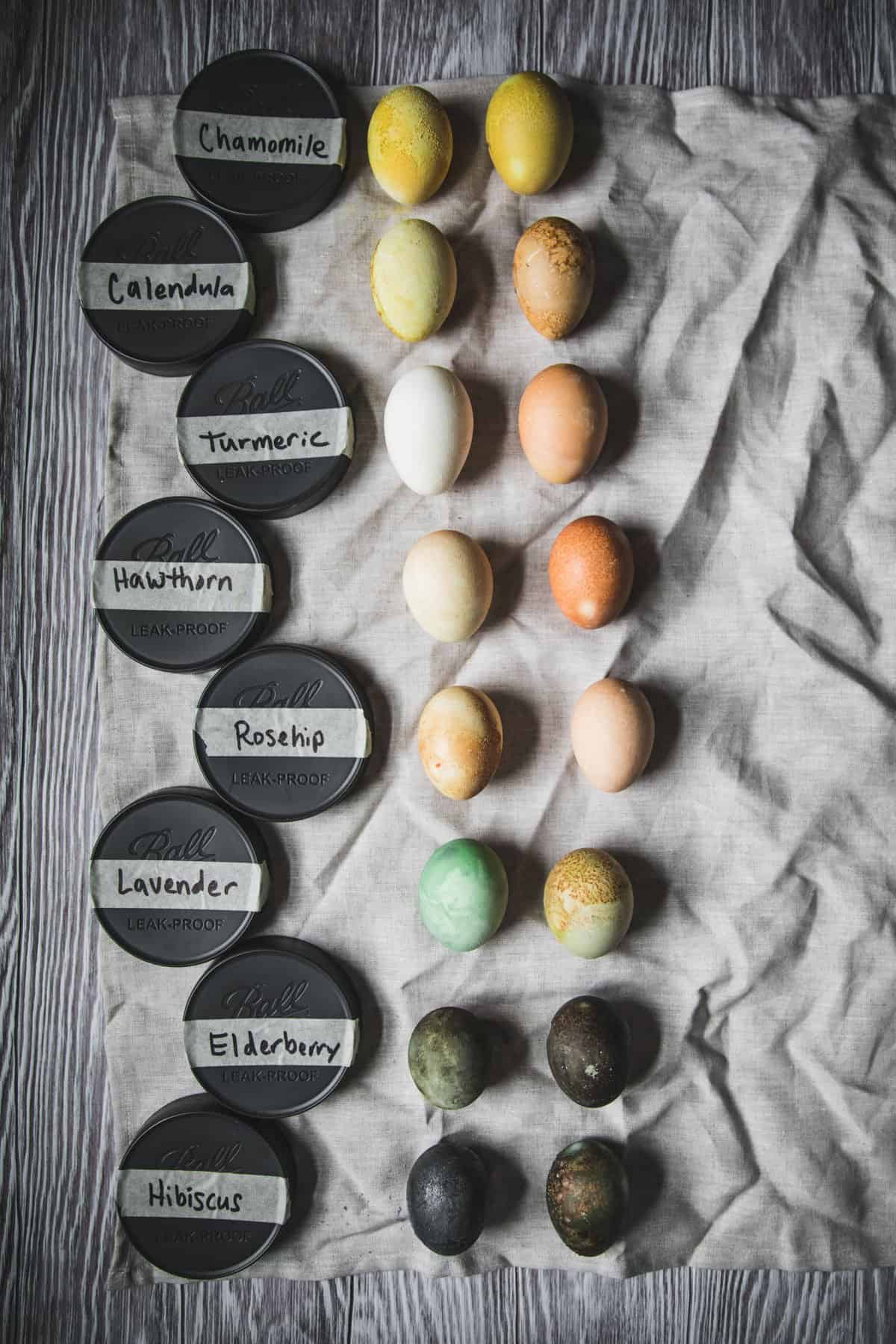
Left are dyed with the addition of alum, right are dyed with the addition of white vinegar
As you can see, the results varied. Calendula, turmeric, and hawthorn berry were definitely better with vinegar added to the dye.
Lavender and elderberry were arguably better with alum added to the dye, but the vinegar versions were pretty cool too.
Chamomile and rose hip were about the same with alum or vinegar.
Hibiscus was gorgeous either way, a beautiful purple-blue with alum and a mottled green and brown with vinegar. Definitely a favorite!
One thing to note is that none of the eggs turned very pink or red. Rose hip was a light pinkish-brown and hawthorn berry with vinegar was a darker pinkish-brown. But neither was a traditional pink.
If you would like pink or red eggs, I suggest trying beets!
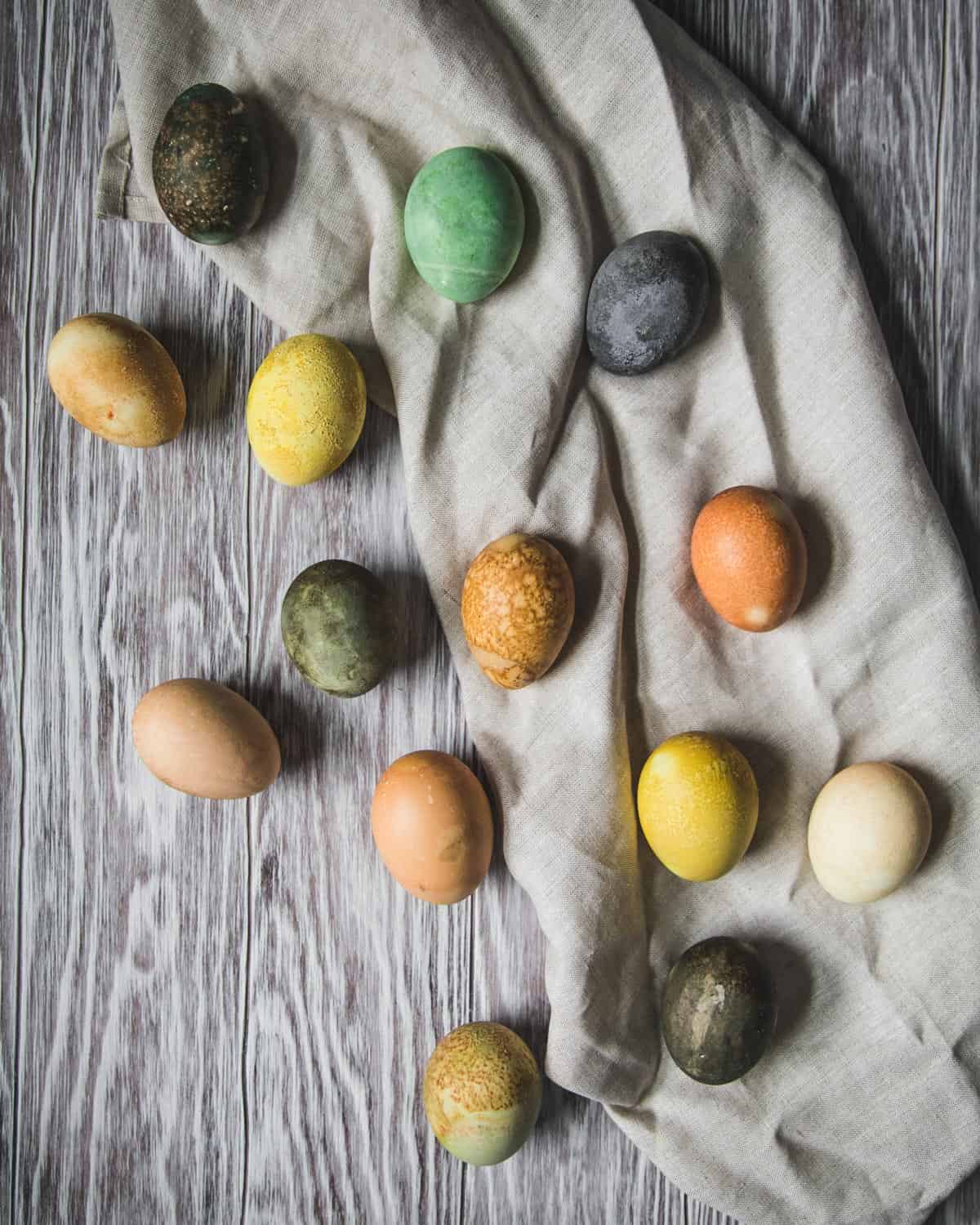
How to Make Naturally Dyed Eggs with Herbal Tea
Making these naturally dyed eggs with herbal tea is so easy!
First hard boil the number of eggs that you would like to color (if you are using farm fresh eggs the steaming method works best).
I recommend using white eggs as the color will show up better on them than on brown eggs.
Next, make the herbal teas. Put about 1/4 cup of dried herb into a pint jar. I used a little more for the dried flowers like calendula and chamomile, closer to 1/2 cup.
Then boil some water and pour it over the herbs in the jars. Let the herbal teas steep for several hours or until cool, then strain out the herbs.
Add either one teaspoon of alum or one tablespoon of vinegar to the tea. The tea can also be split up into two jars if you want to do one with alum and the other with vinegar.
Add an egg or two to each herbal dye color. Cover the jar with a lid and put it in the refrigerator. The eggs should sit in the herbal dye for several hours or even overnight.
Remove the eggs from the dye and set them on a rack to dry. The eggs can be dipped in the dye a second time for a stronger color if desired.
Refrigerate the colored eggs after they have fully dried.
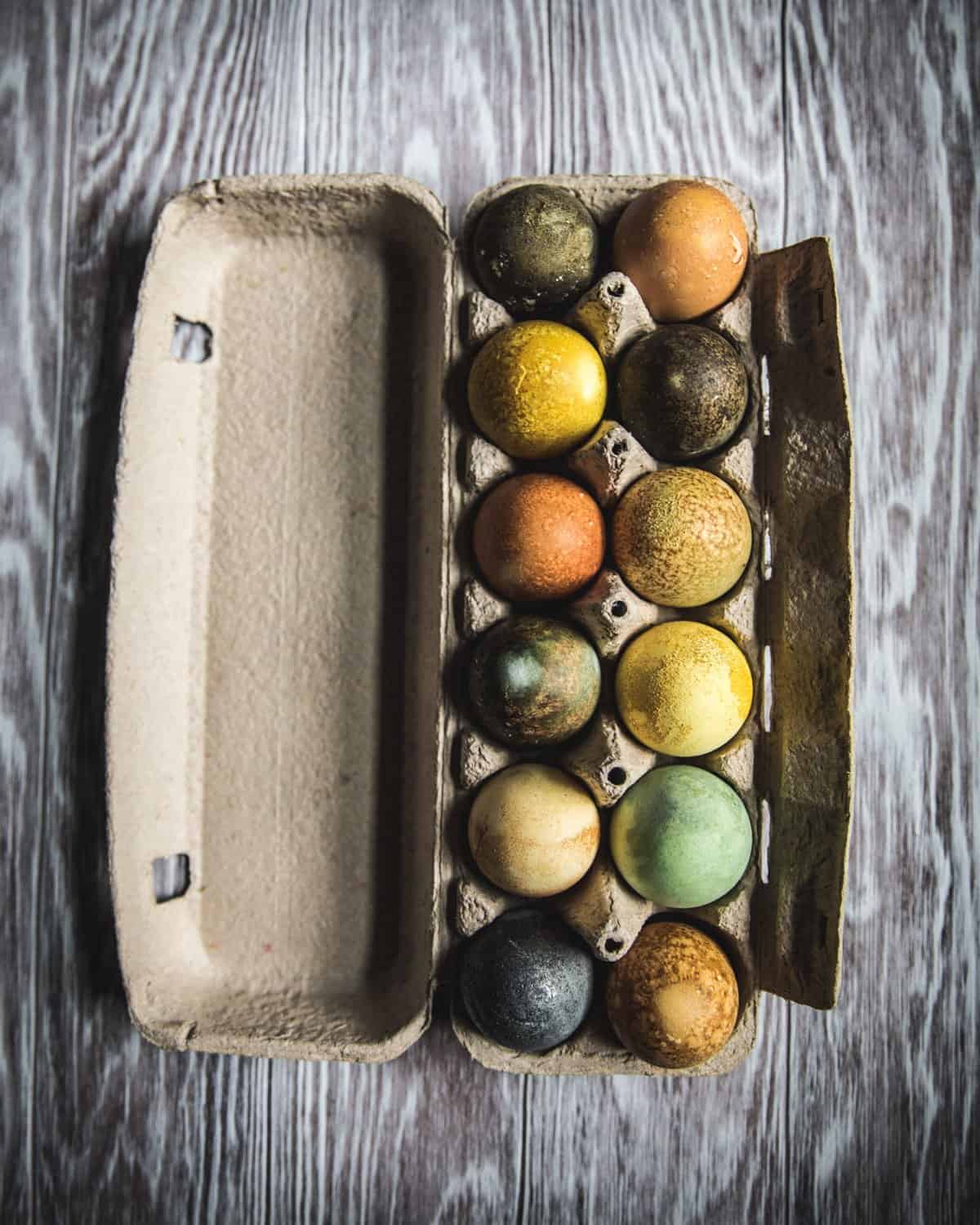
Herb Dyed Eggs are Perfect for Easter or Springtime Celebrations
These naturally dyed eggs with herbal tea are so much fun to make! My five year old thought it was really cool to see all the different color combinations.
I have to say that I am pretty impressed with them as well! They look very planetary if you ask me. The mottling and swirls was not something that I expected, but the end result is stunning!
I hope you try making this herbal egg dye for your Easter eggs or other springtime celebrations! I’d love to hear what herbs you choose and what the final colors are. Please let me know!
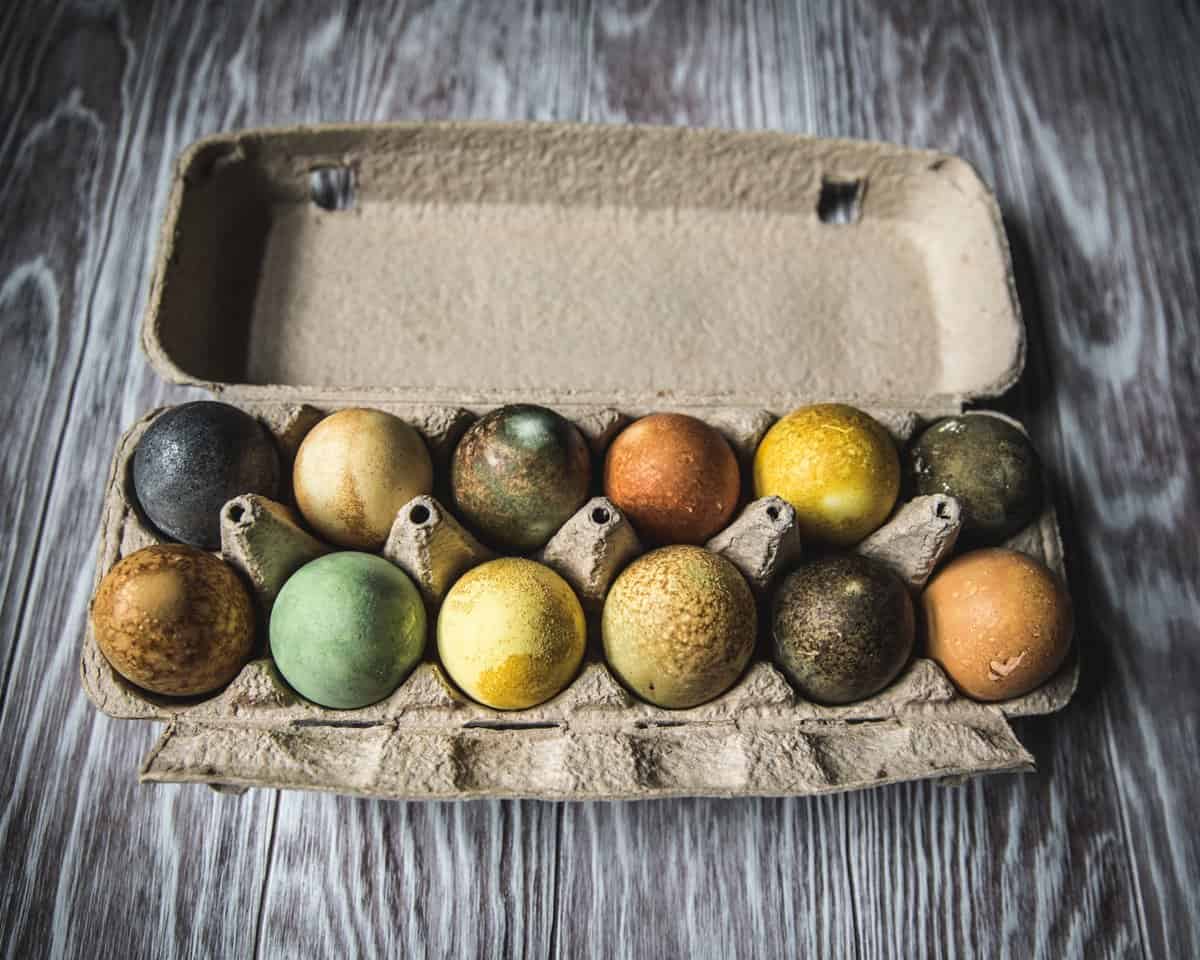
More Spring Recipes
Here are more recipes that are perfect for your spring celebrations!
- Forsythia Flower Honey Syrup
- Wild Violet Infused Vinegar
- Lilac Infused Honey
- Calendula Iced Tea
- Rhubarb Upside Down Cake
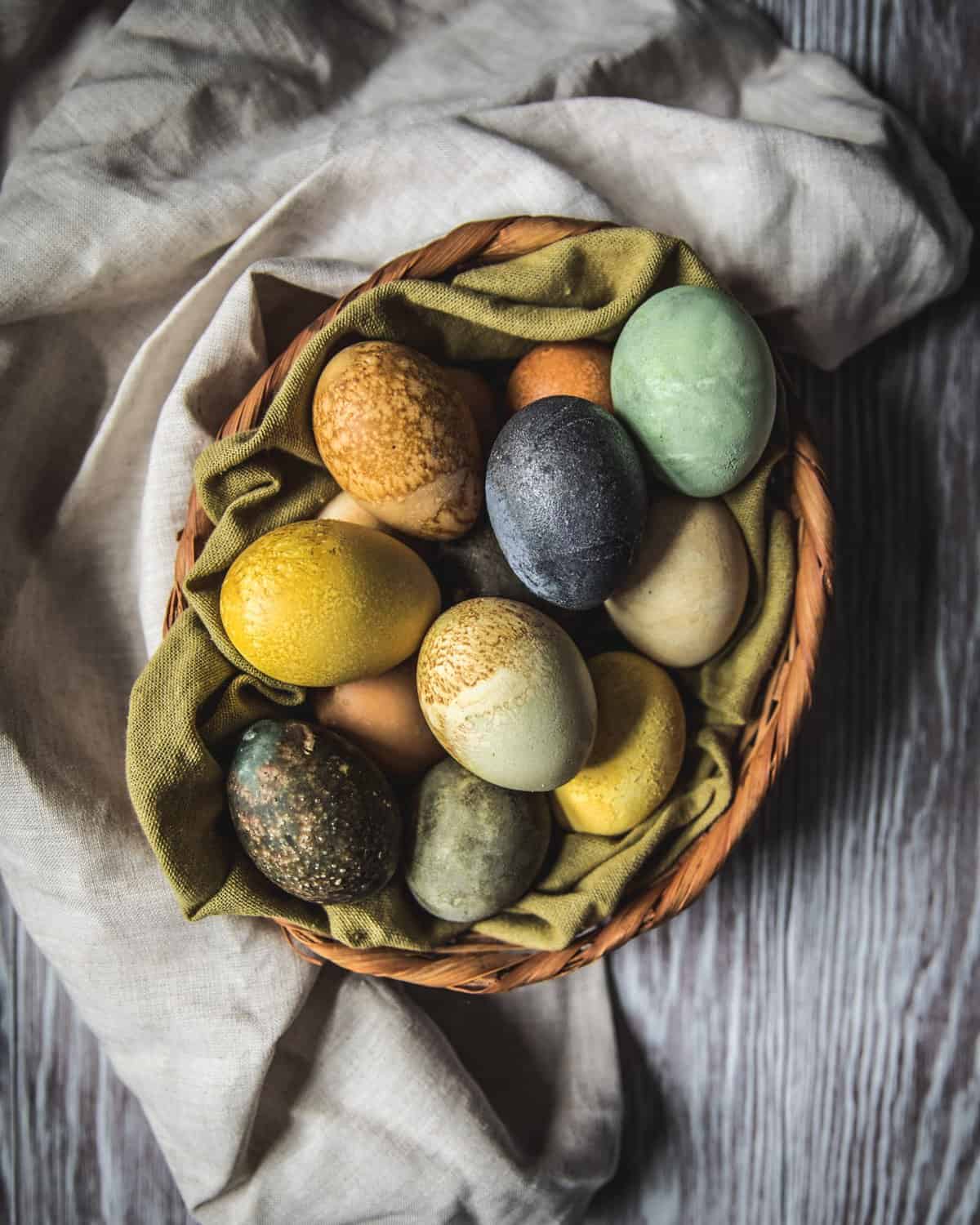
Naturally Dyed Eggs with Herbal Tea
Ingredients
- 12-24 hard boiled eggs white eggs work best
- 1/4 cup dried hibiscus flowers
- 1/4 cup dried elderberries
- 1/4 cup fresh turmeric root sliced
- 1/2 cup dried lavender flowers
- 1/2 cup dried calendula flowers
- 1/2 cup dried chamomile flowers
- 1/4 cup dried rose hips
- 1/4 cup dried hawthorn berries or dried goji berries
- boiling water
- 1 tsp alum per herb color
- 1 Tbsp white vinegar per herb color
Instructions
- Put 1/4-1/2 cup of each dried herb into a pint jar.
- Then boil some water and pour it over the herbs in the jars. Let the herbal teas steep several hours or until cool, then strain out the herbs with a fine mesh sieve.
- Add either one teaspoon of alum or one tablespoon of vinegar to the tea. The tea can also be split up into two jars if you want to do one with alum and the other with vinegar.
- Add an egg or two to each herbal dye color. Cover the jar with a lid and put in the refrigerator. The eggs should sit in the herbal dye for several hours or even overnight.
- Remove the eggs from the dye and set them on a rack to dry. The eggs can be dipped in the dye a second time for a stronger color if desired.
- Refrigerate the colored eggs after they have fully dried.
Notes
- First hard boil the number of eggs that you would like to color (if you are using farm fresh eggs the steaming method works best).
- Some other herbs and flowers you could try are wild violets, dandelion flowers, dandelion root, forsythia flowers, lilac flowers, chive blossoms, or any other edible plants or flowers that you may have growing!
- Green tea, rooibos, nettle, or chaga are other options you could try as well.
- Other popular non-herb choices for natural egg dyeing are beets, red or yellow onion skins, red cabbage, blueberries, blackberries, or spinach.
- Alum and vinegar will do different things to the coloration of the eggs for each herbal tea that is used (see blog post for more info).

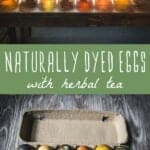
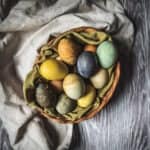

Hi, Where do you buy alum? The eggs pictured are so beautiful! Thanks!
Hi there. I bought alum here.
Can the dyed eggs still be eaten safely or are they just for pretty?
Yes, they’re 100% edible!